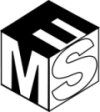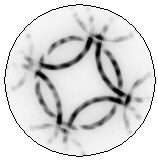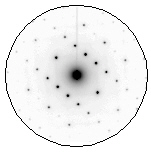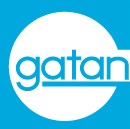

 |
School on Electron Precession
6th to 10th of July 2009
Espace Bouvines
Bouvines (Lille)
France
A satellite school of the Congress of the French Society of Microscopy,
22th- 26th of June 2009, Paris
|



|
Institut Chevreul |
LMPGM
Laboratoire de Métallurgie Physique et Génie des Matériaux |
LSPES
Laboratoire de Structure et Propriétés de l'Etat Solide |
|
|
LATEST NEWS
- Meeting point : metro station “Villeneuve d’Ascq Quatre Cantons” at 17:00 and 18:00 on Sunday 5th of July. A shuttle will be provided to reach the Espace Bouvines where a dinner is planned at 19:00.
- The metro station “Villeneuve d’Ascq Quatre Cantons” can be easily reached from the railway stations “Lille Flandres” or “Lille Europe” (see the following website)
- Please contact Jean-Paul Morniroli or Damien Jacob if you cannot be at the meeting point at 17:00 or 18:00.
- Lastest version of the programme as of June 30th 2009
- List of participants
- Things to bring : your laptop (if you have one...), protection against mosquitos (if you care...), some warm clothes for the evenings.
PROGRAMME and TIMETABLE
Electron precession is a new « revolutionary » diffraction technique. It was proposed by Roger Vincent and Paul Midgley in 1994, in Bristol. Since 2005, this technique develops rapidly due to the availability of commercial devices that could be installed on most transmission electron microscopes.
This equipment allows the acquisition of diffraction patterns on which the diffracted intensities can be taken into account. This property opens new possibilities of structural and microstructural characterizations at microscopic and nanoscopic scales.
This school is aimed at providing the basic and advanced aspects of the theory and practice of the electron precession technique. It concerns all the scientists interested in materials science (PhD students, engineers, researchers) with a basic knowledge in transmission electron microscopy.
The school will be divided into lectures, problem classes and practical sessions on the two precession equipments available at the University of Lille.
- Basic courses on crystallography
- Basic courses on electron diffraction
- Description of the precession technique
- Main experimental parameters
- Pattern interpretations
- Main applications:
- Identification of the crystal system, the Laue class, the point and space groups
- Structure determination
- direct methods
- charge flipping method
- structure resolution and refinement
- Characterization of crystal defects
- Other applications
- Hybrid precession methods
- Filtered electron precession
- Examples of applications in various fields
- Full program and timetable
LECTURERS
Lectures will be given by some of the world specialist in the field. Among them:
- G. Cascarano, CNR-IC, Bari.
- C. Giacovazzo, CNR-IC, Bari.
- S. Hovmoller, University of Stockholm
- X.Zou, University of Stockholm
- H. Klein, UJF, CNRS, Grenoble
- L. Marks, Northwestern University
- P. Midgley, University of Cambridge
- S. Nicolopoulos, Nanomegas.
- P. Stadelmann, EPFL, Lausanne
- L. Palatinus, EPFL Lausanne
- P. Boullay, Laboratoire de Cristallographie et Science des Matériaux, Caen
SCIENTIFIC COMMITTEE
- P. Buffat (EPFL, Lausanne)
- C. Giacovazzo (CNR-IC, Bari)
- R. Portier (ENSCP, Paris)
- G. van Tendeloo (EMAT, Antwerp)
LOCAL OGANIZING COMMITTEE (USTL, Lille)
- A. Legris (USTL, Lille): President
- J. P. Morniroli (USTL, ENSCL, Lille): Scientific director
- J. F. Dhenin (USTL, Lille)
- M. Huvé (USTL, Lille)
- D. Jacob (USTL, Lille)
REGISTRATION and FEES
|
|
For people who have pre-registred, the registration is now opened here
The deadline is 15th April.
If you are a PhD or a Post-Doc student you can apply for one of the grants given by Gatan, Nanomegas, Calidris and Analitex companies (see the registration form).
Following fees include food and accomodation.
- SFµ or EMS members : 800 €
- Non members : 900 €
- PhD and Post-doc, SFµ or EMS members : 600 €
- PhD and Post-doc, non members : 700 €
HOW TO COME?
A meeting point will be fixed on Sunday the 5th of July on the campus. To prepare your travel, do as if you were coming to the LSPES.











